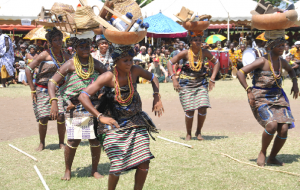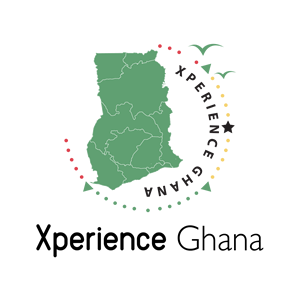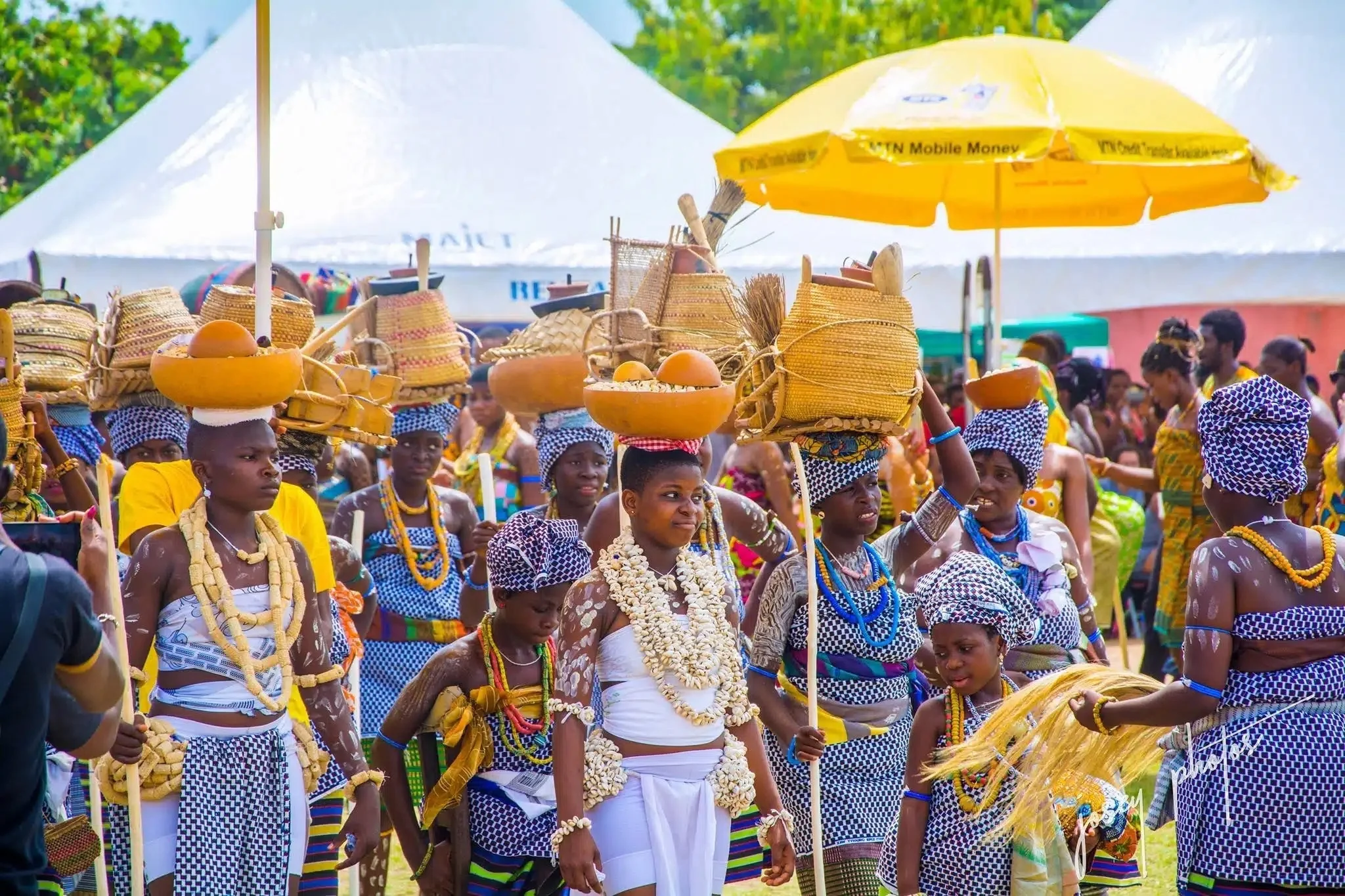The Hogbetsotso Festival is a vibrant and significant celebration observed by the Anlo, Ewe people in the Volta Region of Ghana. Held annually in early November, this major cultural event marks the historical migration of the Anlo Ewe from their ancestral home in Notsie (present-day Togo) to their current settlement in Anloga and its surrounding areas.
History of the Festival
The name “Hogbetsotso” translates to “the great exodus” or “the great migration,” reflecting the festival’s deep connection to the Anlo people’s history and their journey to their present location.
The origins of the Hogbetsotso Festival are deeply rooted in the history of the Anlo Ewe people. According to legend, the Anlo Ewe migrated from Notsie under the leadership of their great ancestor, Togbi Agorkorli, to escape the oppressive rule of the king of Notsie, who subjected them to harsh conditions.
The migration was a dramatic and challenging journey during which the Anlo people faced numerous obstacles, including treacherous terrain, hostile forces, and resource scarcity. Despite these challenges, they successfully navigated their way to the region now known as Anloga, where they established their new home.
The Hogbetsotso Festival commemorates this historic migration and serves as a way for the Anlo Ewe to celebrate their resilience, unity, and survival.
Celebration of the Festival
The festival begins with a series of rituals and ceremonies performed to honor the ancestors and seek their blessings. These rituals are led by the Dufia (traditional leaders) and Togbi (chiefs), who are responsible for maintaining the spiritual and cultural traditions of the Anlo Ewe people. Ceremonies include pouring libation to the gods and ancestors, as well as offering food and drinks. These rituals are performed at sacred sites, including shrines and ancestral homes, intended to invoke the presence of the spirits of the ancestors and to ask for their protection and guidance for the community.
A central element of the Hogbetsotso Festival is the grand durbar of chiefs, held in Anloga, the cultural heart of the Anlo Ewe people. This colorful event brings together various chiefs, elders, and members of the community. During the durbar, chiefs dressed in elaborate traditional attire and adorned with regalia are carried in palanquins and paraded through the streets.
This procession symbolizes respect and reverence for the chiefs, seen as custodians of the people’s culture and traditions. The durbar also provides an occasion for the chiefs to address the people, offering reflections on the significance of the festival, sharing words of wisdom, and discussing matters of community development and unity.
The festival features a re-enactment of the migration story, performed through dance, drama, and storytelling. This re-enactment preserves and passes down the oral history of the Anlo Ewe people, ensuring that future generations remain connected to their heritage.
The performances often include dramatic portrayals of the challenges faced during the migration, as well as the triumphs and achievements of the ancestors. These re-enactments are accompanied by traditional music and dance, with participants dressed in colorful costumes and masks that represent various aspects of the migration story.
Another important aspect of the Hogbetsotso Festival is the cultural performances, showcasing the rich artistic traditions of the Anlo Ewe people. The festival features various performances, including traditional dances, drumming, and music. One of the most notable dances performed during the festival is the Agbadza dance, a high-energy performance involving synchronized movements and intricate footwork.

Accompanied by the beats of traditional drums, such as the gankogui and atumpan, this dance is performed by both men and women in colorful attire. The cultural performances celebrate the Anlo Ewe’s artistic heritage and are a key part of the festival’s festivities.
The Hogbetsotso Festival is also a time for community bonding and reconciliation. During the festival, people come together to resolve conflicts, strengthen relationships, and renew social ties. The festival provides an opportunity for the Anlo Ewe to reinforce their sense of identity and solidarity while addressing any issues that may have arisen within the community. The emphasis on unity and reconciliation highlights the importance of maintaining harmony and mutual respect among the people.
Feasting is another central component of the Hogbetsotso Festival, providing an occasion for communal eating and sharing traditional dishes. Families prepare a variety of foods, including jollof rice, fufu, banku, and groundnut soup, which the community enjoys during the festival. Sharing food expresses gratitude for the blessings of the past year and reinforces the bonds of friendship and kinship.
The Hogbetsotso Festival has also become a significant event for tourism and economic development. It attracts visitors from across Ghana and beyond, who come to experience the rich cultural heritage of the Anlo Ewe people. The influx of tourists provides economic opportunities for local businesses, artisans, and vendors, benefiting from increased activity during the festival.
In recent years, the festival has incorporated development initiatives, such as health screenings, educational programs, and environmental conservation efforts, reflecting the Anlo Ewe people’s commitment to preserving their cultural heritage while addressing contemporary challenges.


